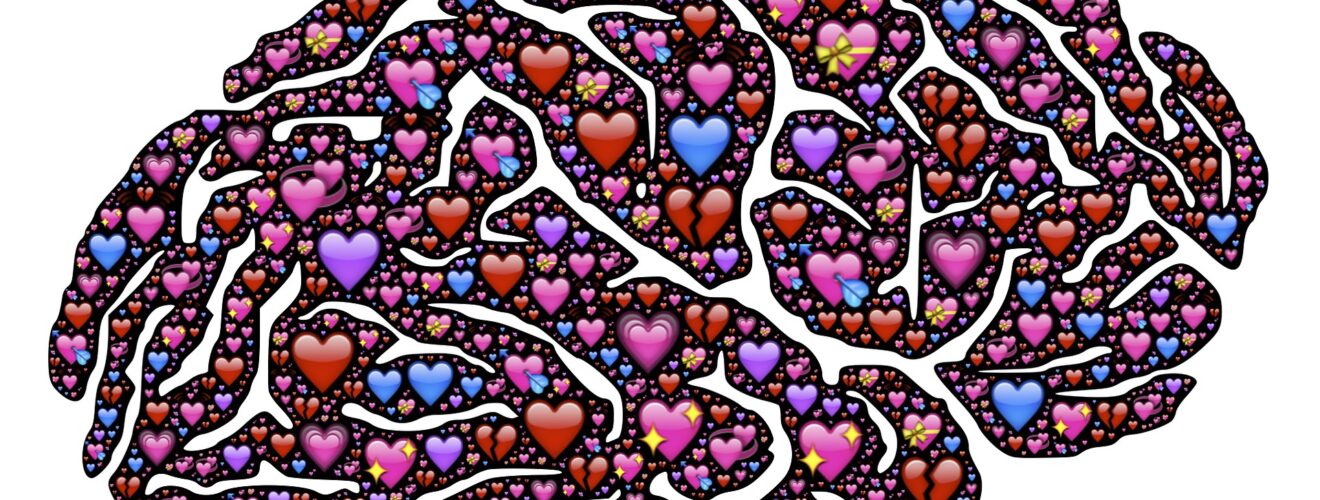The Cupid Called Brain

It’s yet another wet and gloomy afternoon in Glasgow and you’re sitting nursing your hot chocolate, wondering why everything bad happens to you! Then out of the corner of your eye, you spot them coming through the door; fit, charming and with a smile that stops you dead in your tracks. Despite your brain trying to come up with any excuse to stop you from embarrassing yourself, you strike up a conversation. Before long, hours have passed and you’ll later call it your unofficial first date.
Here starts an endless train of texts, phone calls and dates. You can’t stop thinking about them and how perfect they are for you. If a neuroscientist was to dissect your brain at that moment, they would find waves of dopamine being secreted by the hypothalamus, giving you the sensation of euphoria. The histones around the gene coding for the hormone cortisol have been acetylated, leading to high levels of this hormone being secreted by your pituitary glands. Increased cortisol makes you immune to neophobia, so you quickly feel comfortable around this stranger, even though you’ve just only met. The increase in cortisol also decreases your serotonin levels; this is very similar to that of a person with obsessive compulsive disorder. The constant need for his attention, the hour-long chats, the frequent texting — all of this obsessive behaviour can be explained by decreased serotonin. The activity in the frontal and prefrontal cortex of your brain also reduces, shadowing logical judgement and decision making, even causing irrational behaviour. Hence, for you, they appear to be the most flawless person in the world.
The brain of someone in love looks very similar to that of someone on cocaine — constantly elated as anything you experience can set off the pleasure centres in your brain very easily. Your parietal cortex and parts of the temporal lobe are deactivated too. High activity in these parts is associated with depression, thus decreased activity contributes to the positive and happy feelings you experience when in love. The neighbouring areas associated with pain also display decreased activity, making you less bothered by the aversions in your life. This highly ‘passionate’ first phase of a relationship lasts only for about 6 months; during which time everything is perfect and the world around you seems more colourful.
Around 6 to 8 months after your first date, fights begin to happen. Your brain chemistry has changed again. Your serotonin, testosterone and cortisol levels have all gone back to normal, and so has your ability to judge. You start to find flaws — and then you argue. But something still keeps you together, bonded to each other. Well, welcome the two big players in any long term relationship — oxytocin and vasopressin, both secreted in the hypothalamus. Known as the ‘cuddle and trust’ hormone, the main function of oxytocin is muscle contraction during childbirth and lactation, making it responsible for the unconditional love that mothers (especially after a vaginal delivery as opposed to a C-section) have for their babies. This same hormone is also released during cuddling and caressing, giving you comfort and a pleasant feeling. You start trusting the person even after your cortisol levels are back to normal; you unconditionally love the person and grow very much attached because of this oxytocin secretion. Then we have the ‘attachment hormone’, vasopressin. Its main role is to maintain blood pressure, but it also helps in pair-bonding in males; as the production of oxytocin is very low in males compared to females, it is vasopressin instead that causes males to bond with their partners. The release of these two big players also induces the secretion of more dopamine, making this ‘compassionate’ love a very rewarding experience. You can read more about this here 1.
But ‘passionate’ love doesn’t always become ‘compassionate’ love. Sometimes things do not work out. This happens when the decrease in passion and intimacy leads instead to a third type, known as ’empathy’ love. This inevitably leads to a break-up. Your stress hormones fluctuate. You feel uncertain and scared about your future. This is because the areas in your brain usually associated with uncertain rewards and delayed responses become active. Those who are rejected (or dumped) show a very high activity in the areas of the brain involved in depression. Your cortisol levels increase while norepinephrine decreases, leading to a feeling similar to that you experience when physically hurt — this causes the feeling of ‘heartache’ that follows rejection. This is reinforced by the fact that the dorsal anterior cingulate cortex and anterior insula, the regions of the brain that process physical pain, are also the ones that handle emotional pain. The brain cannot differentiate between the two 2.
All emotions serve an evolutionary advantage and love is no exception. The main purpose of you falling in love is so that you can, well… reproduce later, which is essential for the survival of our species. At first glance, you seek a good looking (and symmetrical — yes, humans are more attracted to symmetrical faces) person. This is because, from an evolutionary perspective, good-looking infers fit and healthy, and likely able to pass on his/her genes to the future generation. You get attached emotionally to your partner in a long term relationship for the stability — so that your children can have a secure upbringing with both parents to take care of them. If you experience heartbreak, you feel the physical pain so that you will avoid the social alienation and force yourself to move on and bond with others socially, which has been proven to reduce this kind of pain. This makes you more likely to survive and reproduce. It might all seem like a selfish evolutionary conspiracy, but in the end, these changes in our neurotransmitters are responsible for the wonderful feeling of love, and our ability to move on after the end of a relationship. It’s all part of the wonderful package that comes with being a multicellular social species.
This article was specialist edited by Sarah Brozio and copy edited by Kim Wood.











Awesome read! Good work, Alisha!
I will be sharing this article with everyone who asks me about love and compassion…